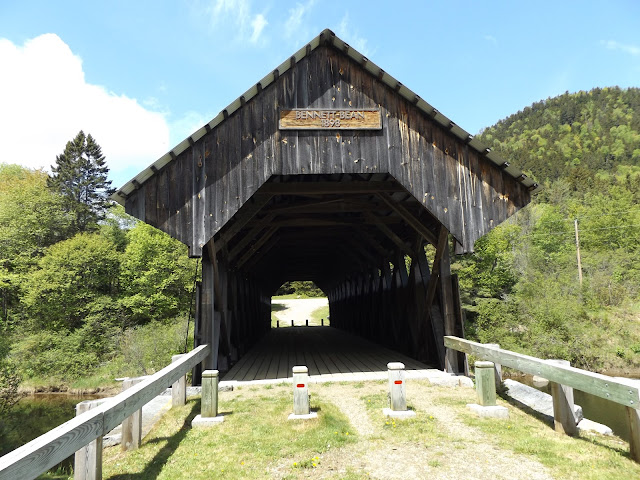Also known as the Bennett-Bean Bridge, the Bennett Covered Bridge is located in Oxford County, Maine near ME 16, not far from the border with New Hampshire. Spanning across the Magalloway River, the Bennett Covered Bridge was built in 1901 by the Mason brothers, although the bridge abutments were built in 1898 by Horace Bennett and Fred Taylor. A Paddleford truss design was used for the construction of this 93 foot long covered bridge located between Lincoln Plantation and Wilsons Mills, Maine.
While motor vehicle traffic is no longer allowed to cross the Bennett Covered Bridge, and have not been able to do so since 1985, you can still get most of the way to the bridge on Littlehale Road at the back end of a campground. This was how I was able to check out the bridge, which had caught my eye as I was driving down ME 16. It was worth a little visit.
 |
| Eastern portal of the covered bridge. |
 |
| A peaceful Magalloway River in summertime, next to the covered bridge. |
How to Get There:
Sources and Links:
Maine Department of Transportation - Bennett Bridge, Lincoln Plantation, Maine
Scenic USA - Maine - Bennett-Bean Bridge
Photographers Trail Notes - Bennett-Bean Bridge
Covered Spans of Yesteryear - Bennett-Bean, Oxford County
DaleJTravis.com - Maine Covered Bridges List


Comments